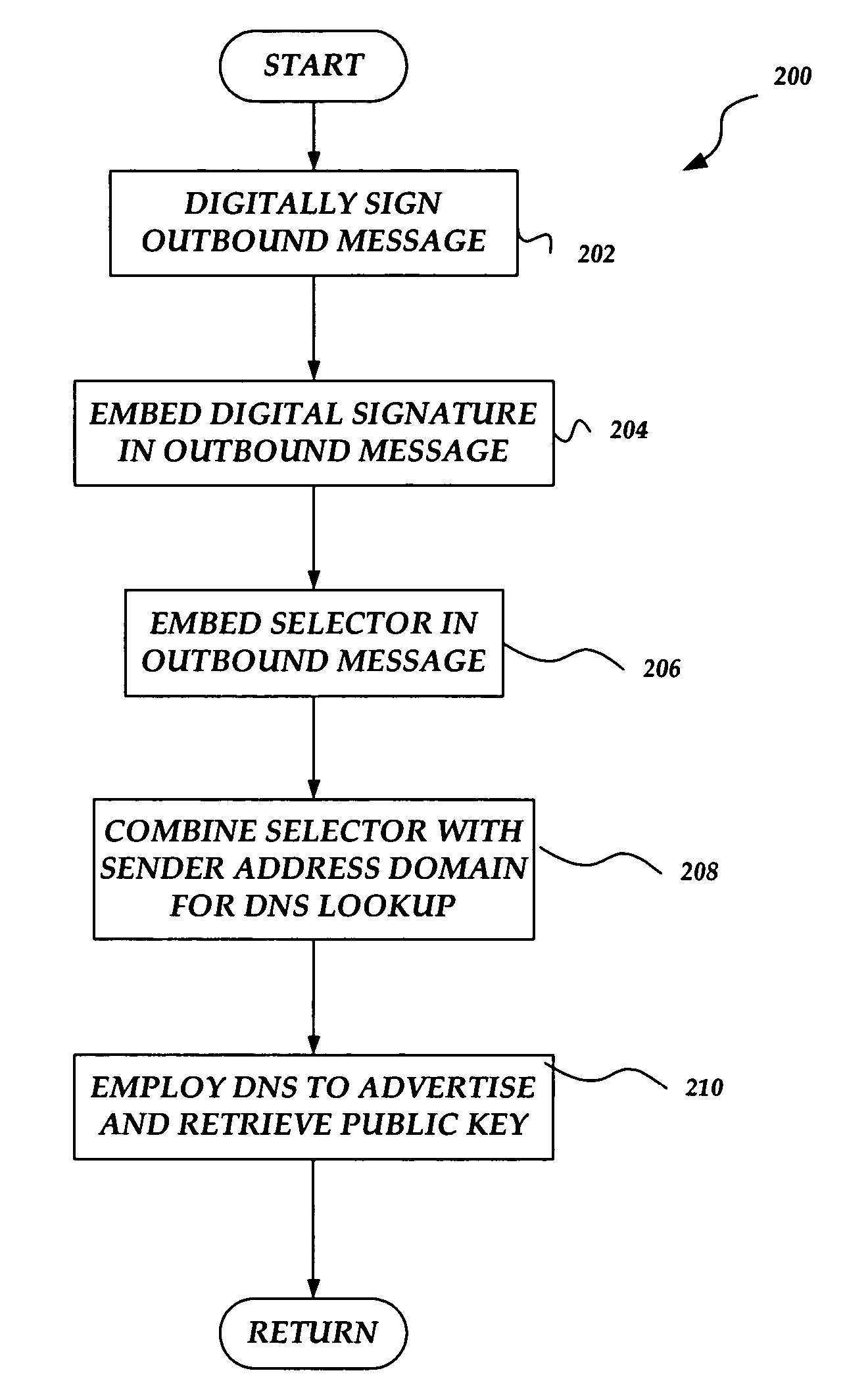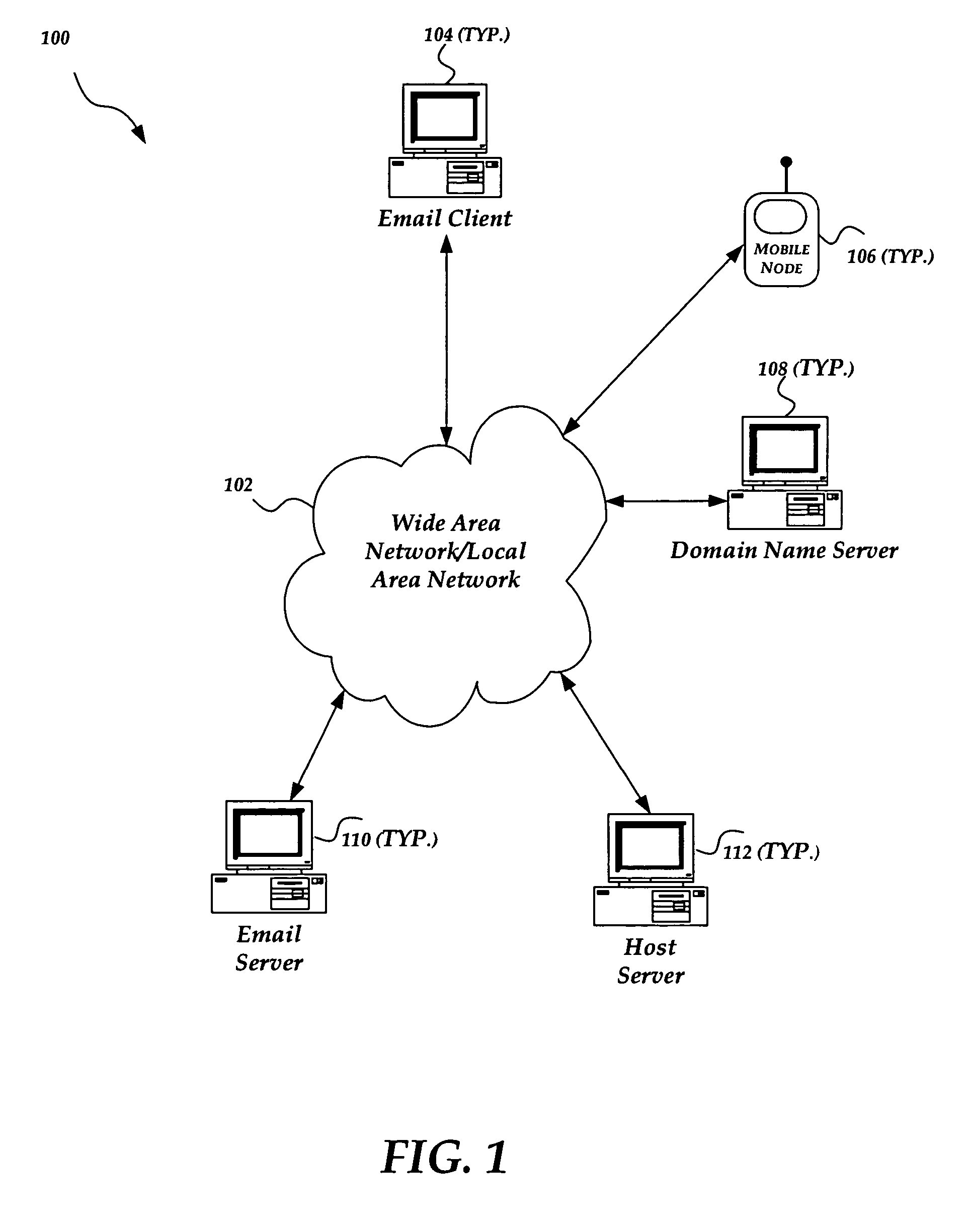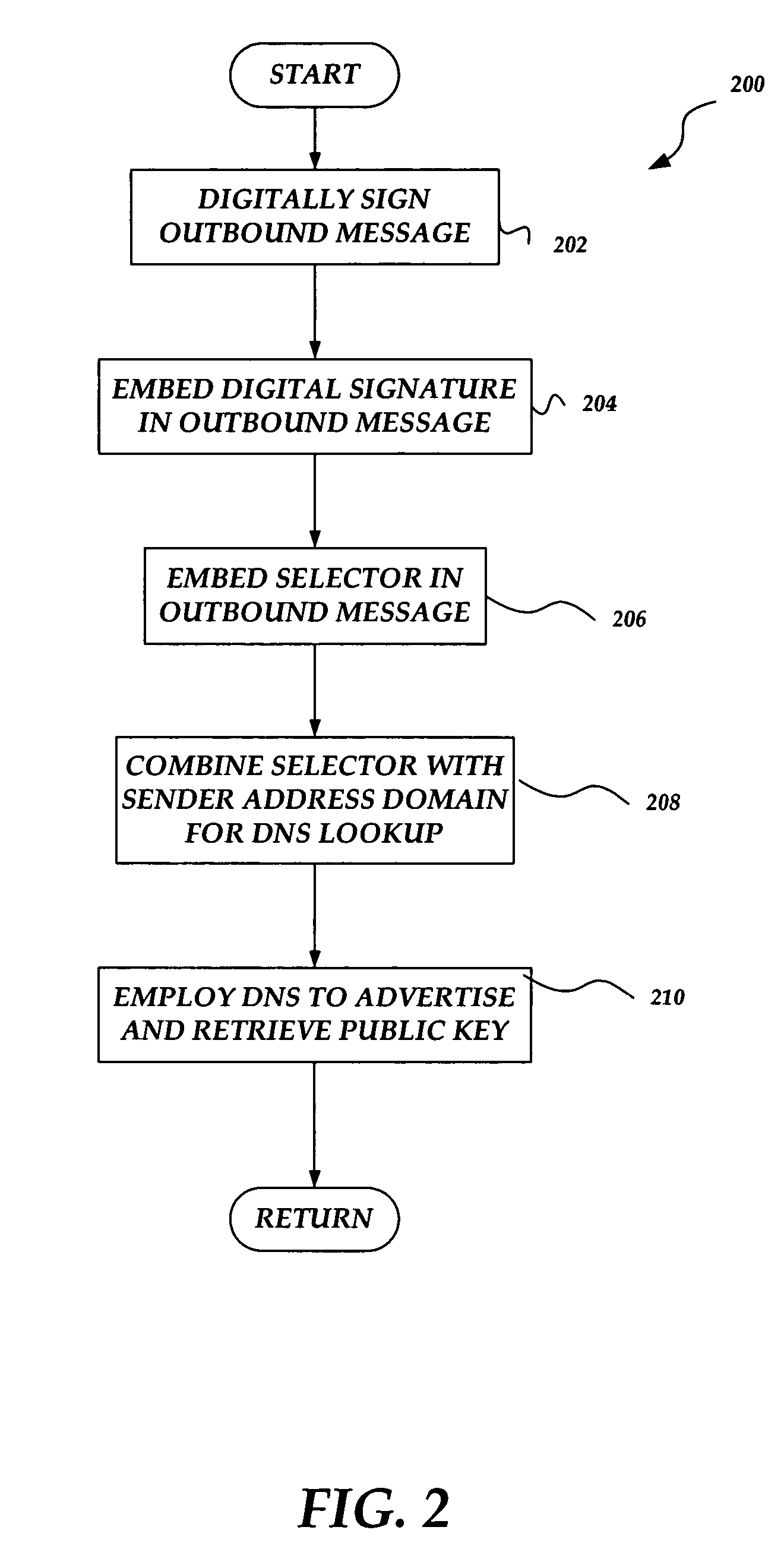Method and system for authenticating a message sender using domain keys
a domain key and authentication method technology, applied in the field of data security, can solve the problems of affecting the benefits of email, and the rampant forging and faking of email addresses, and the inability to verify email addresses
- Summary
- Abstract
- Description
- Claims
- Application Information
AI Technical Summary
Benefits of technology
Problems solved by technology
Method used
Image
Examples
examples
[0075]The following example for the DomainKey application is intended to introduce at least one embodiment of the present invention and illustrate how its concepts may be integrated into a flow of email.
Email Composed by User
[0076]From: “Joe SixPack”[0077]To: “Suzie Q”[0078]Subject: Is dinner ready?[0079]Date: Fri, 11 Jul. 2003 21:00:37-0700 (PDT)[0080]Message-ID: [0081]Hi.[0082]We lost the game. Are you hungry yet?[0083]Joe.
[0084]Nothing about the email authorship process is changed by the DomainKey application. In some implementations it is expected that the sender may have no need to know that the DomainKey application exists.
Email Signed by Sending Email Server
[0085]Using the private key component, this email is signed by the example.com outbound mail server and now looks something like this:[0086]DomainKey-Signature: sigs-0.50:D8CD98F00B204E98:AMLfamjh4GrUzSN5BeUC13qwlq / hL6 GOk8M / 1UNjSRruBNmRugCQoX7 / mHSbSF5Dimr5ey1K6MZg0XclZucPW / s9UWm / mxqWP5uD42B6G+MbSicsj / 2obMIBIQjNzRX7A19r0Ui...
PUM
 Login to View More
Login to View More Abstract
Description
Claims
Application Information
 Login to View More
Login to View More - R&D
- Intellectual Property
- Life Sciences
- Materials
- Tech Scout
- Unparalleled Data Quality
- Higher Quality Content
- 60% Fewer Hallucinations
Browse by: Latest US Patents, China's latest patents, Technical Efficacy Thesaurus, Application Domain, Technology Topic, Popular Technical Reports.
© 2025 PatSnap. All rights reserved.Legal|Privacy policy|Modern Slavery Act Transparency Statement|Sitemap|About US| Contact US: help@patsnap.com



